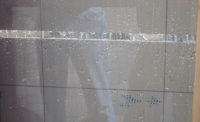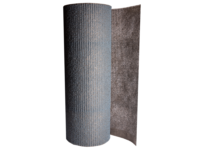Rainscreen is perhaps one of the most misunderstood and misapplied terms in use among design professionals and building product manufacturers today. This has led to a wide range of inexact theories about what a rainscreen is, how it performs, what it looks like, and under what circumstances it is used. Disregarding a decades-long accumulation of evidence and knowledge, an emerging trend is developing in which people believe it is perfectly acceptable to generously perforate a building’s exterior cladding without concern about the inevitable consequence of water penetration in doing so. By simply labeling these claddings as rainscreens, many are satisfied that everything is hunky dory.
Rainscreen means different things to different people. To many design professionals, it is synonymous with a state-of-the-art cladding system that does all things well under any circumstance, and looks cool. To product manufacturers, the term is used as a marketing strategy to increase sales—the mere mention of the term in product literature provides a sense of security designers are looking for when considering a rainscreen. To building envelope consultants, the term is closely linked with job security, as in, “you can pay me now to help design this correctly, or you can pay me later when leaks develop.”
The Force
Arguably, the first occurrence of the term rainscreen appeared in a 1963 Canadian Building Digest(CBD-40) paper Rain Penetration and its Control by C.K. Garden:
“In essence the outer layer [cladding] is then an open rainscreen that prevents wetting of the actual wall or air barrier of the building.”
In this groundbreaking paper, Garden thoroughly and succinctly introduces the fundamentals of the “rainscreen principle,” which defines a complete exterior wall assembly that when designed and installed correctly, and this bears repeating, “prevents wetting of the actual wall or air barrier of the building.” This critically important feature of rainscreen claddings is, as of late, been dismissed by architects and manufacturers alike.
Another Canadian article, Facts and Fictions of Rain-Screen Wallsby M.Z. Rousseau published in 1990, supports and expands upon Gardner’s work. Rousseau writes about the confusion among builders, architects, and engineers with regard to rainscreen walls and emphasizes that, to be considered a rainscreen, a cladding must be, “…designed and built according to what Kirby Garden referred to as the “open rain-screen principle,” whose basic premise is the control of all forces that can carry rain to the inside.”
The forces Rousseau refers to are: Gravity, Surface Tension, Capillarity, Kinetic Energy, and Pressure Differences.
In what is perhaps a misinterpretation of Garden’s term open rainscreen, a proliferation of “open joint” cladding systems are being wrapped around buildings in just about every major U.S. city. However, open joint claddings are very different from what Gardner and Rousseau describe, and fall well short of meeting performance requirements of the rainscreen principle. In most cases, open joint cladding systems allow unimpeded water and snow entry into the wall assembly, through the joints and holes deliberately created, wetting the backside of the cladding material, the air/weather barrier, and everything in between.
Understanding the System
In a 2006 AIA Best Practices paper The Rain Screen Principle, authors Michael J. Lough and David Altenhofen point out that open jointed systems are not claddings at all, and define them instead as “Grilled/Lattice Barriers,” along with the following caution:
“Don’t be fooled into thinking that all open joint multiple element systems are rainscreens; some are barely multiple element systems at all. An open joint cladding system which allows UV penetration and has a quasi-cavity is almost a face-sealed system in disguise.”
The authors point out that open joint claddings have no ability to resist all of the forces required to prevent water from entering a building. By poking holes in the cladding, the first line of defense has been eliminated, and what was previously the second line of defense—air/water barrier—now becomes the first, and only, line of defense against water penetration. This is known as a face sealed cladding, and is appropriately used only in the driest of U.S. climates.
In his 2004 technical paper RR-0406, Building Scientist Joe Lstiburek introduced a cladding system U.S. map/chart to help designers select the most appropriate cladding depending on annual precipitation. The chart includes four distinct cladding systems, each with characteristics suited for different moisture loading. Of these four cladding systems, all except face sealed must be designed in accordance with Garden’s rainscreen principle in order to provide adequate moisture protection. The systems and corresponding precipitation are as follows:
- Pressure Equalized/Pressure Moderated: Greater than 60 inches.
- Drained and Back Ventilated: 40-60 inches.
- Drainage Plane/Drainage Space: 20-40 inches.
- Face Sealed: Less than 20 inches.
With rainscreen and open joint claddings being misunderstand and misapplied, there have to be cladding system test standards to have effective systems. Part two of this article, to be featured in the April 2016 issue, will further discuss these necessary test standards.







Report Abusive Comment